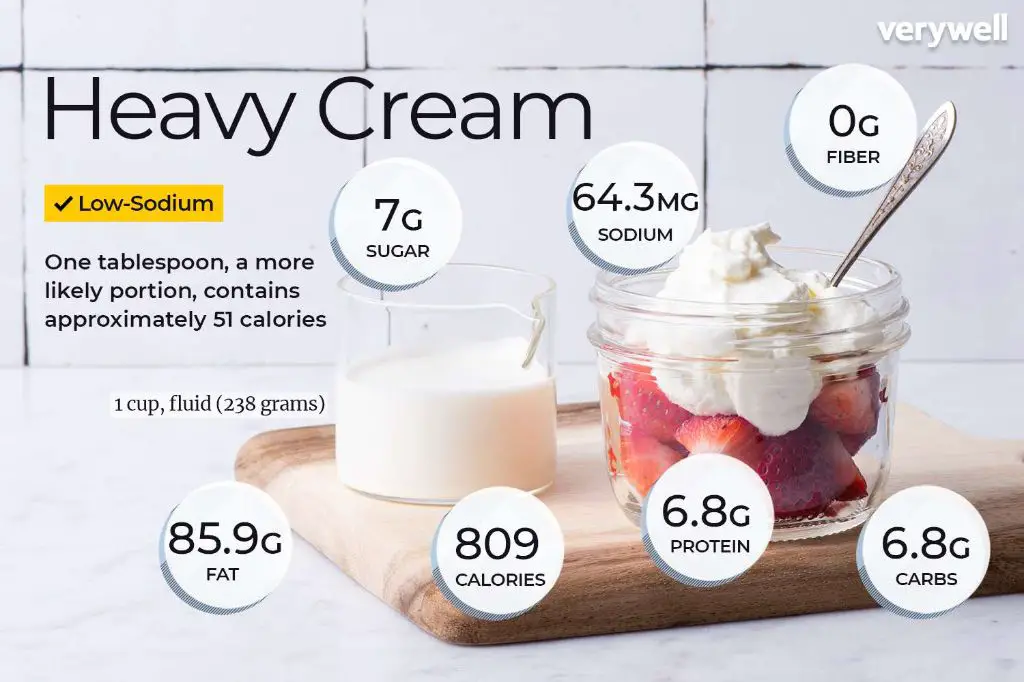Is Cream And Sugar Better Than Coffee Creamer?
There is an ongoing debate amongst coffee drinkers about whether it is better to use cream and sugar or premade coffee creamers. Both have their pros and cons in terms of ingredients, taste, convenience, cost, health impacts, and environmental factors. The choice often comes down to personal preference.
Many people enjoy the time-honored tradition of pouring fresh cream and sugar into their morning coffee for a customizable blend. Premade coffee creamers provide a convenient alternative with fun flavors, while avoiding the need to buy multiple ingredients. This article will dive into the key differences to consider when deciding between cream and sugar versus coffee creamers for your daily cup of joe.
Nutritional Differences
There are significant nutritional differences between heavy cream, half-and-half, coffee creamer, milk, and non-dairy creamers. The main differences are in calorie and fat content.
Heavy cream contains the most calories and fat, with around 800 calories and 88 grams of fat per cup (1). This is because heavy cream is almost entirely made of milk fat. Half-and-half contains far less fat and calories, with around 320 calories and 20 grams of fat per cup (1).

Coffee creamers are the lowest in calories and fat. Coffee creamers typically contain 20-40 calories and 2-4 grams of fat per tablespoon serving (1). This is because most coffee creamers are made from water, sugar, and vegetable oils rather than dairy. Non-dairy creamers are similar, with 25-35 calories and 1-2 grams of fat per tablespoon (2).
In comparison, whole milk contains about 150 calories and 8 grams of fat per cup, while 2% milk has 120 calories and 5 grams of fat (3). So milk and non-dairy creamers have fewer calories and less fat than heavy cream or half-and-half, but more than coffee creamers.
Ingredients
There are major differences in the ingredients between cream and sugar versus coffee creamers. Coffee creamers often contain artificial ingredients like corn syrup solids, hydrogenated vegetable oils, and preservatives to prolong shelf life and create a creamy texture.
In contrast, using real cream and sugar provides natural ingredients. Heavy cream contains milk fat and sometimes thickeners like carrageenan or guar gum. Table sugar contains sucrose from sugarcane or sugar beets. These ingredients are more familiar and sound less artificial or chemical-laden.
According to the website My Forking Life, some of the most common ingredients in homemade coffee creamers include: https://www.myforkinglife.com/homemade-coffee-creamer/.
Many people prefer to avoid artificial ingredients and preservatives where possible. Using real cream and sugar allows you to control exactly what goes into your coffee.
Taste
The taste of coffee can vary significantly depending on whether you add real cream and sugar or use powdered coffee creamers. Real cream has a rich, velvety texture that can soften the bitterness of coffee beautifully. The subtle sweetness of sugar also helps balance the coffee’s acidity. In contrast, many powdered coffee creamers have an artificial, overly sweet flavor that can overpower the natural taste of the coffee. Some people also find powdered creamers leave an unpleasant aftertaste or chalky texture.
That said, flavored coffee creamers like French vanilla or hazelnut can be appealing if you enjoy very sweet, dessert-like coffee drinks. The flavors and sweeteners help mask the strong coffee taste. So in terms of optimizing the natural flavor of coffee, real cream and sugar often win over artificial creamers. But for those who prefer a sweeter, more heavily flavored coffee drink, powdered creamers can provide that.
Convenience
When it comes to convenience, cream and sugar or coffee creamers both have their advantages. Cream and sugar require having those items on hand, while creamers are pre-mixed into a portable liquid or powder. However, pre-mixed coffee creamers are designed for convenience and portability.
Coffee creamers come in small bottles or powder packets that can easily be transported in a purse, bag, or pocket. This makes it easy to add creamer anywhere, from the office to a coffee shop. Cream and sugar require carrying around extra items like sugar packets or small containers of cream, which takes up more space.
Powdered coffee creamers are especially convenient since they don’t need to be refrigerated. The powder mixes instantly into hot coffee for a quick creamer solution. With cream and sugar, you need to carefully portion out the right amounts every time to achieve the desired flavor. Coffee creamers provide pre-mixed flavors and sweetness in just a squirt or sprinkle.
When it comes to ease of use on-the-go, coffee creamers win out. Their portability and quick preparation make them an ultra convenient way to add flavor to coffee compared to managing separate cream and sugar.
Cost
When comparing the cost of using cream and sugar versus coffee creamer, cream and sugar generally come out as the more affordable option. According to a Reddit analysis, creamer costs around $0.20 per ounce, while a pound of coffee beans to make 48 cups of coffee costs around $6.50. That comes out to around $0.13 per cup for the coffee versus $0.20 per ounce of creamer. Since you would likely use 1-2 ounces of creamer per cup, the creamer would add $0.20-$0.40 per cup versus just $0.13 for the coffee. Powdered coffee creamers may save some cost over liquid creamers, but are still generally more expensive than using regular dairy cream. When you factor in the cost of sugar, which is very inexpensive, cream and sugar is clearly the less expensive option compared to pre-packaged coffee creamers.
Health Impacts
Some of the ingredients commonly found in non-dairy creamers may raise health concerns. Many creamers contain trans fats from hydrogenated or partially hydrogenated oils, which have been linked to an increased risk of heart disease and stroke (1). Non-dairy creamers also tend to be high in added sugars. Consuming excess added sugars is associated with obesity, type 2 diabetes, heart disease, and other chronic illnesses (2).
On the other hand, plain dairy cream contains mostly natural fats and minimal added sugar when used sparingly. The saturated fat in dairy may potentially raise cholesterol levels, but the effect is weak and other factors like exercise have a greater impact on heart health (3). Ultimately, both dairy cream and non-dairy creamers should be consumed in moderation as part of an overall balanced diet.
(1) https://www.thecommonscafe.com/what-are-the-health-effects-of-coffee-creamer/
(2) https://morningcoffeejournal.com/is-coffee-creamer-bad-for-you/
Environmental Impact
When considering the environmental impact of cream versus coffee creamer, liquid coffee creamers often contain more packaging and processing which increases waste. According to research from the University of Kentucky, 77% of consumers believed sustainability should be promoted for the greater good rather than personal benefit. Whipping cream, coffee creamer, and ice cream were among the dairy products perceived as less sustainable.
Plant-based coffee creamers can have a lower environmental impact compared to dairy creamers. As noted in a LinkedIn article, opting for plant-based creamers can contribute to reduced environmental impact due to the resource-intensive nature of dairy production. The article cites that dairy milk generates 2-3 times more greenhouse gas emissions compared to plant-based milks like almond, oat or soy.
Preference
Many coffee drinkers have strong opinions when it comes to using cream, half and half, or coffee creamers. According to a survey by the National Coffee Association, over 60% of coffee drinkers prefer to use some type of additive like cream or sugar in their daily cup of coffee.
Those who prefer using real cream or half and half over coffee creamers cite the more natural ingredients and richer taste as the main reasons. Cream and half and half contain milk fat, which can improve the texture and mouthfeel of coffee. Coffee creamers are made of vegetable oils, sweeteners, stabilizers and emulsifiers to replicate the properties of cream (1). Some people find coffee creamers to have an artificial or chemical taste.
On the other hand, coffee creamer enthusiasts appreciate the convenience, lower calories, and variety of flavored options. Coffee creamers come in single-serve liquid pods or powder packets for easy mixing. Popular flavors like French vanilla, caramel, and hazelnut can satisfy a sweet tooth. For those watching their calorie intake, coffee creamers tend to be lower in fat and calories compared to heavy cream or half and half (1).
When it comes to health considerations, some people strictly avoid coffee creamers due to the added sugars and highly processed ingredients. Those with lactose intolerance may tolerate coffee creamers better since they don’t contain milk ingredients. Personal preference plays a large role when deciding between real dairy creamers or coffee creamers.
Conclusion
In conclusion, both cream and coffee creamers come with benefits and downsides. Coffee creamers are more convenient with many flavor options and a longer shelf-life. However, they contain a list of artificial ingredients and lack the healthy fats and nutrients found in real cream. Cream provides more taste and texture but requires more effort to use and store. It also has some health benefits from the vitamins and antioxidants not present in non-dairy creamers.
Overall, the choice between cream and coffee creamers comes down to personal preference and convenience. For the healthiest option with the most natural ingredients, cream is likely the better choice. But non-dairy creamers make a quick and tasty cup of coffee with less fuss. Consider your priorities like taste, health, and environment when deciding between real dairy cream and the various coffee creamer products.



